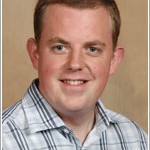Please note: This course will be taught online only. In person study is not available for this course.

Mathematics for Social Scientists is offered throughout the six weeks with teaching scheduled daily before other courses. If taken in conjunction with another course, there is no extra charge. Christopher Saker is a Lecturer in the Department of Mathematical Sciences and the Manager of the Essex Further Mathematics Centre. His research interests lie in the combinatorics of words, particularly the study of unavoidable sets.
Course Objectives
This course is intended for those with little recent mathematical experience but who are motivated to learn. The aim is to provide a service course in support of other Summer School courses (primarily in the analysis of quantitative data) by presenting a unified introduction to the mathematical ideas and techniques used in those courses. The structure of the course is arranged, firstly, to provide an introduction to the concepts and techniques for the practical side of the subject, and, secondly, to develop a more deeper understanding of the ways in which these concepts and techniques are connected. Summer School participants may take any one Part and/or all three Parts of the course, but anyone taking Parts 2 or 3 will be presumed to be familiar with the material covered in the preceding Parts.
Course Content
Part 1 of the course is an introductory module which begins by reviewing the equations and graphs of straight lines and simple curves. It progresses to the study of functions such as trigonometric, logarithmic and exponential functions. The session concludes with an introduction to differentiation and some of its applications
Course Prerequisites
Participants in the course should be familiar with the basic ideas of arithmetic and algebra (addition, subtraction, multiplication, division, use of brackets, positive, negative, fractional powers, and the solution of simple equations). Students should possess a basic scientific calculator.
Recommended Reading
For a review of the concepts listed in the prerequisites we recommend the Algebra Refresher which can be found by following the revision booklets link from mathcentre.ac.uk. Note that the site also has learning resources available for these and other basic mathematical topics.
Additional Reading
Haeussler, E.F., Paul, R.S., and, Wood, R. 2004. Introductory Mathematical Analysis for Business, Economics, and the Life and Social Sciences. Prentice Hall.
Recommendations for other textbooks will be made during the course.


